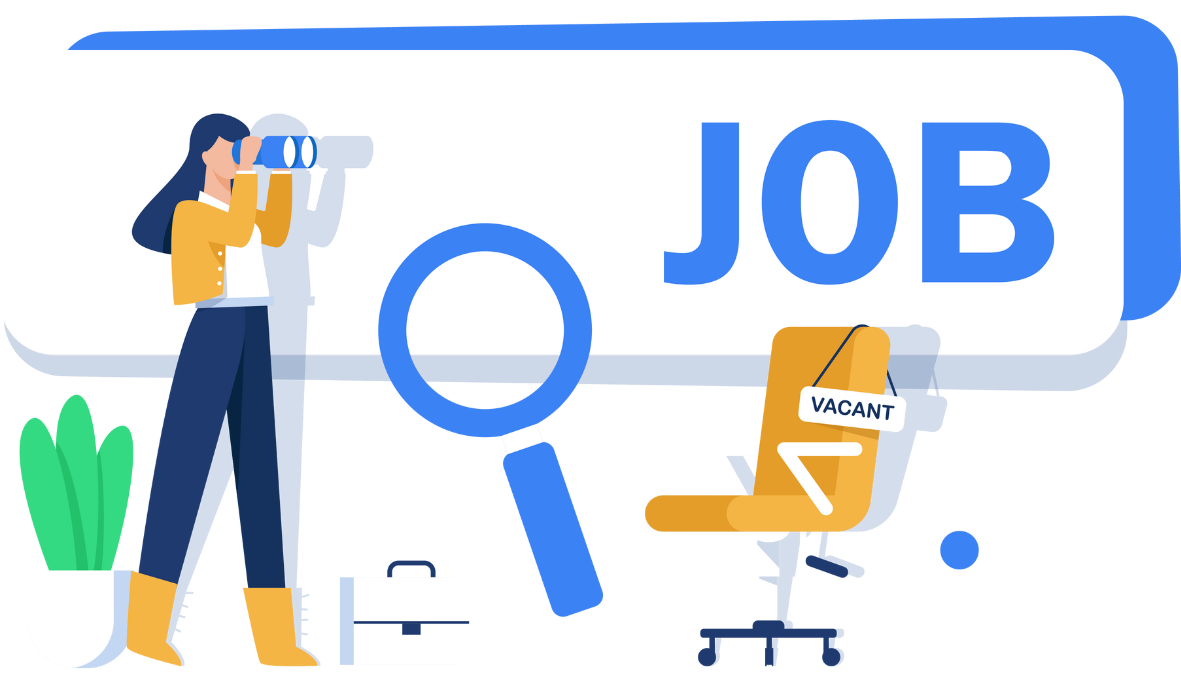Spinwell Global
Interesting Jobs for Interesting People
5 Essential Questions to Ask Before Accepting a Job Offer
5 Essential Questions to Ask Before Accepting a Job Offer

Accepting a job offer is a significant decision that can greatly impact your career and overall well-being. To ensure you make an informed choice, it is crucial to ask the right questions before accepting a job offer. In this blog post, we will discuss five essential questions that can help you evaluate the job offer and make the best decision for your professional future.
1. What are the company’s values and culture?
Understanding the company’s values and culture is vital to determine if it aligns with your own beliefs and work style. Ask about the company’s mission, vision, and core values. Additionally, inquire about the work environment, employee engagement initiatives, and opportunities for growth and development. This information will give you insight into whether the organisation is a good fit for your long-term career goals.
2. What are the job responsibilities and expectations?
Before accepting a job offer, it is crucial to have a clear understanding of the role and responsibilities. Ask for a detailed breakdown of the job tasks, reporting structure, and performance expectations. This will help you evaluate if the position matches your skills and interests, and if you possess the necessary qualifications to excel in the role.
3. What is the remuneration package?
While remuneration is not the sole factor in job satisfaction, it is undeniably an important consideration. Inquire about the salary, benefits, and any additional perks or incentives offered. Evaluate if the remuneration package aligns with your expectations and the market value for similar positions. Don’t hesitate to negotiate if you feel the offer is not competitive, but do so tactfully and after thorough research.
4. What opportunities for growth and advancement exist?
To foster career growth and development, it is essential to understand the opportunities for advancement within the organisation. Ask about potential career paths, training programmes, mentorship opportunities, and performance evaluation processes. This information will assist you in determining if the company is invested in its employees’ professional growth and if it can provide the challenges and learning opportunities you seek.
5. What is the work-life balance like?
Achieving a healthy work-life balance is crucial for overall job satisfaction and personal well-being. Inquire about the company’s expectations regarding working hours, flexibility, and remote work options. Additionally, ask about employee support programmes, holiday policies, and stress management initiatives. Assessing the company’s approach to work-life balance will help you determine if it aligns with your personal needs and priorities.
Accepting a job offer should be a well-informed decision based on careful evaluation of various factors. By asking these essential questions, you can gain a deeper understanding of the job opportunity, the company culture, and the potential for growth. Remember, it is important to take the time to assess each aspect before making a final decision.
Get in touch with us
NK
Personal Branding: Unleashing Your Potential as a Job Seeker
Personal Branding: Unleashing Your Potential as a Job Seeker

In today’s competitive job market, standing out from the crowd is essential for job seekers. While a well-crafted resume and impeccable interview skills are important, personal branding has become a powerful tool that can make a significant difference in your job search.
This blog post will explore the concept of personal branding and provide valuable insights on how you can harness its potential to enhance your job-seeking journey.
Understanding Personal Branding
Personal branding is the process of strategically presenting and promoting yourself to potential employers or clients. It involves showcasing your unique skills, experiences, values, and personality traits to create a strong and authentic professional identity. Just like big companies have brands, as a job seeker, you too have the opportunity to create a brand that sets you apart from other candidates.
Identifying Your Strengths and Unique Value Proposition
To build a compelling personal brand, you must first identify your strengths and unique value proposition. Take some time to reflect on your skills, accomplishments, and experiences. What sets you apart from others? What makes you unique? Understanding your strengths will help you craft a clear and authentic personal brand message that resonates with potential employers.
Building an Online Presence
In today’s digital age, having a strong online presence is crucial. Start by creating or updating your LinkedIn profile, ensuring it is optimised to showcase your skills, experiences, and achievements. Consider building a professional website or blog to showcase your expertise and thought leadership. Engage with industry-specific groups on social media platforms and share relevant content to establish yourself as a knowledgeable professional in your field.
Consistency is Key
Maintaining consistency across all your personal branding touchpoints is essential. This includes your resume, cover letter, social media profiles, and online portfolio. Ensure that your messaging, tone, and visual elements align with your personal brand. Consistency builds trust and makes it easier for potential employers to understand and remember you.
Showcasing Your Expertise
One effective way to enhance your personal brand is by demonstrating your expertise. Share your knowledge and insights through blog posts, articles, or guest contributions to industry publications. Speak at relevant conferences or events, or participate in webinars and podcasts. By positioning yourself as an expert in your field, you increase your credibility and attract the attention of potential employers.
Networking and Relationship Building
Networking plays a vital role in personal branding. Attend industry events, join professional organisations, and connect with like-minded individuals in your field. Building genuine relationships can lead to referrals, job opportunities, and valuable insights. Remember, personal branding is not just about promoting yourself; it’s also about building meaningful connections with others.
Revisit and Refine
As you progress in your job search and career, it’s important to periodically revisit and refine your personal brand. Assess your goals, monitor industry trends, and adapt your personal brand accordingly. Continuously refine your messaging, update your online presence, and seek feedback to ensure that your personal brand remains relevant and impactful.
In the competitive job market, personal branding has become a crucial component of a successful job-seeking journey. By understanding and harnessing the power of personal branding, you can differentiate yourself from other candidates and increase your chances of securing your dream job. Build a strong online presence, showcase your expertise, and consistently communicate your unique value proposition. Embrace personal branding as a job seeker, and unlock your true potential.
Remember, your personal brand is a reflection of who you are and what you stand for. Be authentic, stay true to yourself, and let your personal brand shine through.
Get in touch with us
NK
Enhancing the Candidate Experience: A Recruiter’s Guide
Enhancing the Candidate Experience: A Recruiter’s Guide

In today’s competitive job market, attracting and retaining a top talent is crucial for the success of any organisation. As a recruiter, your role extends beyond simply sourcing candidates; it’s about creating a positive and memorable experience for each candidate throughout the recruitment process.
In this blog, we will explore the importance of improving the candidate experience and provide practical tips for recruiters to enhance their approach.
First Impressions Matter
The initial interaction a candidate has with your organisation sets the tone for their entire experience. Ensure that your job descriptions are clear, concise, and reflect your employer brand. Make the application process seamless by minimising unnecessary steps and optimising your career portal for mobile devices. Promptly acknowledge receipt of applications and set realistic expectations regarding the recruitment timeline.
Effective Communication
Communication is the cornerstone of a positive candidate experience. Provide regular updates and feedback to candidates at every stage of the process. Be transparent about the selection process, including the number of interview rounds, assessments, or reference checks involved. Timely and personalised communication helps candidates feel valued and engaged throughout their journey.
Streamlined Interview Process
Simplify the interview process to respect both the candidate’s time and your own. Consider conducting virtual interviews or utilising video conferencing tools to eliminate the need for excessive travel. Clearly communicate interview expectations, including the format, duration, and any required materials. Offering flexibility in scheduling interviews demonstrates your organisation’s commitment to work-life balance.
Engage Hiring Managers
Collaboration with hiring managers is vital for an exceptional candidate experience. Educate them on the importance of prompt feedback and involvement in the recruitment process. Encourage hiring managers to provide detailed job descriptions, participate in interviews, and share insights on the candidate’s fit with the team. This involvement not only strengthens the candidate experience but also fosters a sense of ownership within the hiring team.
Personalise the Experience
Tailor the candidate experience to make it unique and personalised. Address candidates by their names and reference specific details from their resumes during conversations. Provide opportunities for candidates to ask questions and gain insights into the company culture. Consider organising virtual meet-and-greet sessions with potential team members or organising office tours to create a connection with your organisation.
Solicit Feedback
Feedback is invaluable for continuous improvement. Request feedback from candidates regarding their experience with your recruitment process. Use this feedback to identify areas for enhancement and implement necessary changes. Demonstrating a commitment to learning and growth will not only improve the candidate experience but also strengthen your employer brand.
Embrace Technology
Leverage technology to streamline and enhance the candidate experience. Utilise applicant tracking systems to automate administrative tasks, provide status updates, and collect feedback. Explore chatbot solutions to address frequently asked questions and facilitate quick responses. Video interviewing platforms can also provide flexibility, reduce time constraints, and minimise geographical barriers.
Improving the candidate experience is not only beneficial for candidates themselves but also for your organisation’s reputation and talent acquisition efforts. By prioritising clear communication, personalisation, and efficient processes, recruiters can create a positive and memorable experience for candidates, leading to increased engagement, higher quality hires, and a stronger employer brand. Remember, every candidate interaction is an opportunity to showcase your organisation’s values and commitment to exceptional talent acquisition. Start enhancing the candidate experience today and reap the rewards of a more successful recruitment process.
Navigating the Public Sector
A Closer Look at the World of Public Sector Working

Public sector contract working offers a unique and flexible employment option within the realm of public service. In this blog, we will delve into the world of public sector contract work, exploring its benefits, challenges, and the valuable contributions it makes to society. Whether you’re already a contract worker or considering this path, join us on this journey to uncover the intricacies of public sector contract working.
Understanding Public Sector Contract Work:
Public sector contract work involves individuals providing their services to government agencies, departments, or public institutions on a temporary or project-based basis. Contract workers are hired to fulfill specific needs, such as supporting ongoing projects, providing specialised skills, or filling temporary staffing gaps. This arrangement allows organisations to tap into external expertise while maintaining flexibility in their workforce.
Flexibility and Variety:
One of the primary advantages of public sector contract working is the flexibility it offers. Contract workers have the opportunity to choose projects and assignments that align with their skills, interests, and desired work-life balance. This flexibility allows individuals to explore diverse roles and gain experience across different sectors, enhancing their professional growth and adaptability.
Opportunity for Specialisation:
Public sector contract work often requires specialised skills and expertise. As a contract worker, you can leverage your unique abilities and knowledge to contribute to specific projects or initiatives. Whether it’s in IT, engineering, policy development, or any other field, contract workers bring fresh perspectives and innovative solutions to public sector challenges.
Impact and Contribution:
Contract workers in the public sector have the opportunity to make a meaningful impact, even within a temporary assignment. By contributing their skills and expertise, they play a vital role in advancing public sector initiatives and improving the delivery of public services. Contract workers often bring a fresh perspective and valuable insights, infusing new ideas into established frameworks.
Building a Diverse Professional Network:
Working as a contract employee in the public sector provides a unique opportunity to build a diverse professional network. Contract workers collaborate with professionals from various departments, agencies, and backgrounds, broadening their horizons and fostering valuable connections. These connections can lead to future opportunities and open doors for further career growth.
Challenges and Considerations:
While public sector contract working has many advantages, it also comes with its own set of challenges. Contract workers may face uncertainty regarding future projects and job security. Additionally, adapting quickly to new environments and building relationships within short-term assignments can be demanding. However, the ability to navigate these challenges can strengthen resilience and versatility, key qualities in today’s dynamic job market.
In conclusion, public sector contract working provides a flexible and rewarding path for individuals who want to contribute to the public good while maintaining a versatile career trajectory. The ability to choose projects, gain specialised experience, and make an impact across various sectors are just a few of the benefits of this employment option. So, if you’re seeking a unique professional journey that combines flexibility, specialisation, and the opportunity to make a difference, public sector contract working might be the perfect fit for you. Embrace the possibilities and embark on a fulfilling career that leaves a lasting impact on society.
The Rise of AI in Recruitment
The Rise of AI in Recruitment: Transforming the Hiring Landscape
In recent years, artificial intelligence (AI) has made significant strides in various industries, and recruitment is no exception. With its ability to streamline processes, improve efficiency, and enhance decision-making, AI is revolutionizing the way organizations find and hire top talent.
In this blog, we will explore the impact of AI on recruitment, the benefits it brings, and the potential challenges that arise in this ever-evolving landscape.
Efficient Resume Screening:
One of the most time-consuming aspects of recruitment is sifting through numerous resumes to identify potential candidates. AI-powered resume screening tools can swiftly analyse resumes and identify relevant skills, qualifications, and experience. This automation saves recruiters countless hours, allowing them to focus on more strategic tasks, such as candidate engagement and relationship building.
Enhanced Candidate Matching:
AI algorithms can analyse job descriptions and candidate profiles to identify the best match, taking into account various factors like skills, experience, and cultural fit. By leveraging machine learning, AI can continuously refine its understanding of what makes a successful hire, leading to more accurate and efficient candidate recommendations.
Bias Reduction:
Unconscious bias can unintentionally influence hiring decisions, leading to a lack of diversity in the workplace. AI has the potential to address this issue by minimizing bias in the recruitment process. By utilizing objective data and predefined criteria, AI algorithms can evaluate candidates solely on their qualifications and skills, disregarding demographic information. This ensures fair and unbiased candidate evaluation, promoting diversity and inclusion within organizations.
Improved Candidate Experience:
AI-powered chatbots and virtual assistants are transforming the candidate experience. These intelligent systems can engage with candidates, answer frequently asked questions, schedule interviews, and provide updates on application status. AI technology offers real-time assistance and personalized interactions, enhancing employer branding and attracting top talent for a seamless candidate experience.
Predictive Analytics for Hiring Success:
AI algorithms can analyse vast amounts of data to identify patterns and trends that correlate with successful hires. By examining factors such as past performance, education, and work history, AI can predict a candidate’s potential for success within an organization. This data-driven approach enables recruiters to make more informed decisions and increases the likelihood of finding the right fit for the job.
Challenges to Consider
While AI offers numerous benefits to the recruitment process, it is crucial to address potential challenges and ethical considerations. The following are some factors that need careful consideration:
- Data privacy and security: Handling sensitive candidate data requires robust security measures to protect privacy and prevent unauthorized access.
- Algorithm bias: AI algorithms rely on diverse and representative datasets, emphasizing the importance of data quality and inclusivity.
- Candidate perception: Balancing automation and human interaction is crucial to avoid alienating candidates who prefer a personal hiring experience.
In conclusion the integration of AI in recruitment has the potential to revolutionize the hiring landscape. From streamlining resume screening to enhancing candidate matching and improving the overall candidate experience, AI offers numerous benefits to both recruiters and candidates alike. However, organizations must remain vigilant in addressing potential challenges to ensure that AI is leveraged ethically and responsibly. Therefore AI and human expertise combine to unlock efficient recruitment, leading to better hires and long-term success for organisations.
Get in touch with us
NK
Navigating the 2024 Job Market
Navigating the 2024 Job Market: Overcoming Challenges and Embracing Opportunities
This year brings with it a host of challenges for job seekers, as the global landscape continues to evolve rapidly. From technological advancements to economic shifts, the job market is constantly changing, presenting unique difficulties for those seeking employment.
Let’s explore some of the key challenges that job seekers may encounter in 2024 and how to navigate them effectively.
Automation and Technological Disruption
The rapid advancement of technology has led to the automation of many traditional job roles. Job seekers may face difficulties as they compete with automation and artificial intelligence, leading to a shift in the skills and qualifications required by employers. Adapting to this changing landscape by acquiring new skills and embracing technological literacy is crucial for staying competitive in the job market.
Remote Work Expectations
The COVID-19 pandemic has accelerated the adoption of remote work, leading many employers to embrace flexible work arrangements. Remote work offers opportunities but also challenges, like increased competition and the need for self-discipline. Adapting is crucial in 2024.
Economic Uncertainty and Job Insecurity
Economic fluctuations and geopolitical uncertainties can contribute to job insecurity for many individuals. The job market may experience fluctuations in certain industries, leading to layoffs, restructurings, and a heightened sense of instability. Job seekers must adapt, remain resilient, and explore diverse opportunities while staying agile in their career pursuits.
Skills Mismatch and Credentialing
The demand for specific skills and qualifications may evolve rapidly, leading to a potential mismatch between the skills possessed by job seekers and those sought by employers. Additionally, the credentialing process and the recognition of alternative forms of education and skill development, such as online courses and micro-credentials, may present challenges in proving one’s qualifications to potential employers.
Mental Health and Well-being
The stresses of job seeking, coupled with the uncertainties of the current global climate, can take a toll on the mental health and well-being of job seekers. Coping with rejection, managing financial pressures, and maintaining a positive outlook in the face of adversity becomes paramount for individuals navigating the job market.
Navigating the Difficulties: Strategies for Success
Despite the challenges, job seekers can adopt strategies to navigate the complexities of the job market in 2024. Embracing lifelong learning and upskilling, networking effectively, seeking mentorship, maintaining a positive mindset, and leveraging online resources and professional communities are crucial steps for overcoming the difficulties encountered in the pursuit of meaningful employment.
In conclusion, the job market offers both opportunities and challenges. Adaptability, resilience, and a proactive mindset are crucial for success.
Get in touch with us
NK
The Power of Diversity: Why Inclusive Recruitment Matters
The Power of Diversity: Why Inclusive Recruitment Matters
In today’s rapidly evolving world, the importance of diversity in the workplace cannot be overstated. As organizations strive to create inclusive environments that foster innovation and creativity, the role of recruitment in achieving this goal has come under the spotlight. In this blog, we’ll explore the significance of inclusive recruitment practices and how they contribute to the success of modern businesses.
Diversity in the Workplace
Workplace diversity includes differences in race, ethnicity, gender, age, sexual orientation, physical abilities, and religious beliefs, among others.
Diverse hiring actively seeks candidates from varied backgrounds to create an environment where everyone feels valued and respected.
 Benefits of Inclusive Recruitment
Benefits of Inclusive Recruitment
One of the key benefits of inclusive recruitment is the enhancement of innovation and creativity. When a team is composed of individuals with diverse perspectives and experiences, they are more likely to generate a wider range of ideas and solutions. This diversity of thought can lead to the development of ground-breaking products and services that cater to a broader audience.
Moreover, diverse hiring has a positive impact on employee morale and retention. When individuals feel that their unique attributes are appreciated and celebrated, they are more likely to be engaged and committed to their work. This sense of belonging can significantly reduce turnover rates and contribute to a positive organizational culture.
From a business perspective, diverse recruitment can also improve a company’s reputation and market competitiveness. In today’s socially conscious world, consumers are increasingly drawn to organizations that demonstrate a commitment to diversity and inclusion. By showcasing a diverse workforce, companies can attract a broader customer base and gain a competitive edge in the market.
Ensuring Inclusive Recruitment Practices
So, what can organizations do to ensure their recruitment practices are inclusive? First and foremost, it’s essential to examine and revise job descriptions to eliminate biased language and requirements that could deter certain groups from applying. Additionally, implementing blind recruitment processes, where identifying information is removed from applications, can help mitigate unconscious biases.
Furthermore, providing diversity training for hiring managers and interviewers is crucial in fostering an inclusive recruitment environment. This training can raise awareness of unconscious biases and equip individuals with the tools to conduct fair and equitable interview.
These steps can help organizations create a more inclusive and diverse workforce, leading to numerous benefits for both the employees and the company as a whole.
In conclusion, inclusive recruitment is a strategic advantage for businesses, unlocking team potential, driving innovation, and creating a thriving workplace.
Get in touch with us
NK
Traditional vs. Video Interviews
Traditional vs. Video Interviews
In the realm of recruitment, traditional face-to-face interviews have long been the standard for evaluating candidates. However, the emergence of video interviews has introduced a new dimension to the hiring process.
Let’s delve into the comparison between traditional and video interviews to understand their respective advantages and drawbacks.
Traditional Interviews
 Traditional interviews involve in-person meetings between the interviewer and the candidate.
Traditional interviews involve in-person meetings between the interviewer and the candidate.
This method has been the cornerstone of the recruitment process for decades, offering immediate feedback and the opportunity for communication.
Pros of Traditional Interviews
- Immediate Feedback: Dialogue between candidates and interviewers allows immediate feedback and deeper understanding.
- Open Communication: Traditional interviews facilitate open communication and discussions, providing a comprehensive view of the candidate’s personality and suitability.
Cons of Traditional Interviews
- Time-Consuming: In-person interviews can be time-consuming for both interviewers and candidates, especially when travel is involved.
- Geographical Limitations: Candidates living farther away may face challenges related to travel costs and logistics, limiting the talent for a position.
Video Interviews
 Video interviews, whether live or pre-recorded, have gained popularity due to their cost-effectiveness, time efficiency, and ability to widen the talent for a position.
Video interviews, whether live or pre-recorded, have gained popularity due to their cost-effectiveness, time efficiency, and ability to widen the talent for a position.
Pros of Video Interviews
- Cost and Time Efficiency: Video interviews are less expensive and time-consuming than in-person interviews, allowing employers to schedule and hold multiple meetings with ease.
- Widened Talent Pool: Video interviews enable individuals from diverse geographical locations to participate, thereby widening the talent for a position.
Cons of Video Interviews
- Technical Challenges: Conducting video interviews may pose technical challenges for both interviewers and candidates, such as internet connectivity issues or unfamiliarity with video conferencing platforms.
- Reduced Personal Interaction: Video interviews may lack the personal touch and nonverbal cues that are prominent in face-to-face interactions, potentially impacting the depth of candidate evaluation.
In conclusion both traditional and video interviews have their unique strengths and limitations. While traditional interviews offer immediate feedback and open communication, video interviews provide cost and time efficiency, as well as the ability to widen the talent pool.
The choice between the two methods ultimately depends on the specific needs of the organization and the nature of the position being filled. As technology continues to evolve, it’s essential for recruiters to adapt and leverage the benefits of both traditional and video interviews to make informed hiring decisions.
Get in touch with us
NK
From Setbacks to Success: Overcoming Disappointment in Your Job Search Journey
From Setbacks to Success: Overcoming Disappointment in Your Job Search Journey

Job searching can be an emotional rollercoaster ride. It’s a journey filled with excitement, hope, and occasionally, disappointment. Rejections, unanswered applications, and missed opportunities can take a toll on your confidence and motivation. However, it’s crucial to remember that setbacks are a part of the job search process.
In this blog, we will explore effective strategies to deal with disappointment while job searching, helping you stay resilient and focused in your job search journey
Allow Yourself to Feel
It’s natural to feel disappointed when things don’t go as planned. Acknowledge your emotions and allow yourself to feel them. Suppressing or ignoring your disappointment can lead to increased stress and anxiety. Take some time to process your feelings, and remember that it’s okay to be disappointed.
Reflect and Learn
Rather than dwelling on the negative aspects of a rejection or missed opportunity, use them as learning experiences. Analyse what went wrong and identify areas for improvement. Assess your skills, qualifications, and interview performance objectively. This self-reflection will help you refine your approach and increase your chances of success in the future.
Seek Support
Job searching can be a lonely and isolating process. Reach out to your support network, including friends, family, and mentors. Share your experiences, frustrations, and disappointments with them. Not only will they provide a listening ear, but they can also offer valuable advice, insights, and perspective. Their encouragement and support can boost your morale and help you stay motivated.
Maintain a Routine
Job searching can be a full-time job in itself, and it’s easy to get overwhelmed. Establishing a routine can provide structure and a sense of purpose during this challenging time. Set specific goals and allocate time for job searching, networking, and self-improvement activities. Maintaining a routine will help you stay focused and productive, even in the face of disappointment.
Take Breaks
While it’s essential to remain proactive, it’s equally important to take breaks and recharge. Job searching can be mentally and emotionally draining. Engage in activities that bring you joy and relaxation, whether it’s spending time with loved ones, pursuing hobbies, or practicing self-care. These breaks will rejuvenate your mind, allowing you to approach your job search with renewed energy and enthusiasm.
Expand Your Network
Networking is a crucial component of job searching. Build connections with professionals in your field of interest through platforms like LinkedIn or attending industry events. Engaging with like-minded individuals can provide valuable insights, potential job leads, and even mentorship opportunities. Remember, each interaction is an opportunity to broaden your network and increase your chances of finding the right job.
Embrace Growth Opportunities
Use this time to invest in personal and professional development. Take online courses, attend workshops, or acquire new certifications to enhance your skill set. Upskilling not only adds value to your resume but also boosts your confidence. Embracing growth opportunities demonstrates your commitment to self-improvement and may open doors to new possibilities.
Job searching can be a challenging and sometimes disheartening process. However, by adopting these strategies, you can navigate disappointment with resilience and maintain a positive mindset. Remember that every setback brings you one step closer to the right opportunity. Stay determined, keep learning, and believe in your abilities. Your dream job is waiting for you, and with the right mindset, you will find it.
Get in touch with us
NK
The Power of Teamwork
The Power of Teamwork: Thriving in the Office and Remote Work Settings

In today’s dynamic work environments, teamwork has become more important than ever. Whether you’re working in a bustling office or remotely, fostering a culture of effective collaboration and teamwork is crucial for achieving success.
In this blog post, we will explore the significance of teamwork in both office and remote work settings and highlight the benefits it brings to individuals, teams, and organisations.
-
Enhanced Creativity and Innovation: When individuals from diverse backgrounds and skill sets come together, they bring unique perspectives and ideas to the table. Collaborative teamwork encourages brainstorming sessions, where everyone’s input is valued, leading to more innovative solutions. Whether it’s in-person or through virtual platforms, the collective creativity of a team fuels growth and propels organisations forward.
-
Increased Productivity: Teamwork creates an environment that fosters productivity. By working together, team members can divide tasks, share responsibilities, and leverage each other’s strengths. This collaborative approach enables teams to accomplish projects more efficiently, meet deadlines, and achieve goals. Whether it’s collaborating on a project management tool or utilising virtual communication platforms, teamwork optimises productivity in both office and remote work settings.
-
Improved Communication and Skills Development: Teamwork encourages open communication and active listening. When team members collaborate, they gain insights into different communication styles and learn to adapt their own. This fosters a more inclusive and supportive work culture. In addition, working in teams provides opportunities for individuals to develop crucial skills such as effective communication, conflict resolution, and negotiation, which are vital for personal and professional growth.
-
Enhanced Support and Motivation: In any workplace, challenges and setbacks are inevitable. However, working as a team provides a support system where members can share their experiences, provide feedback, and offer assistance. This support network boosts morale, motivates team members to overcome obstacles, and creates a sense of camaraderie. In remote work settings, virtual team-building activities and regular check-ins can help foster this sense of support and connection.
-
Promotes Learning and Continuous Improvement: Teamwork creates an environment that encourages continuous learning and improvement. Through regular collaboration and knowledge sharing, team members can learn from one another’s expertise, experiences, and perspectives. This collective learning fosters professional development and enables teams to stay ahead in a rapidly evolving work landscape.
Teamwork is a fundamental pillar of success in both office and remote work settings. By embracing collaboration, organisations can harness the power of diverse talents, enhance creativity, boost productivity, and create a supportive work culture. Whether physically together in an office or collaborating remotely, investing in teamwork is an investment in the growth and success of individuals, teams, and organisations alike. So, let’s celebrate the strength of teamwork and create a work environment where collaboration thrives!
Get in touch with us
NK
Next Page »« Previous Page






